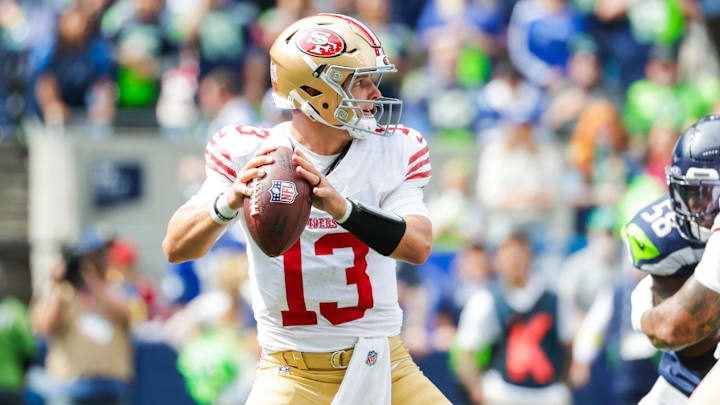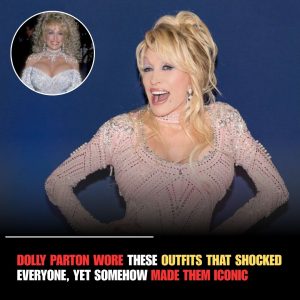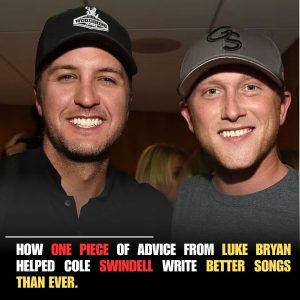It began with a limp.
A tiny, almost unnoticeable hitch in Brock Purdy’s step as he jogged off the practice field during the 49ers’ offseason workouts in Santa Clara. For weeks, coaches brushed it off as “just soreness.” Fans assumed it was precautionary rest. But what seemed like a minor turf-toe tweak has quietly stretched into one of the most frustrating chapters of Purdy’s young career — a recovery taking longer than anyone inside the building expected.
To the average fan, turf toe sounds trivial — the kind of injury a player could tape up and play through. But for quarterbacks, whose every throw begins with a push from the front foot, that joint means everything.
“It’s one of those injuries that looks harmless on paper but kills you in the details,” said Dr. Michael Hsu, a Bay Area sports podiatrist not affiliated with the team. “It affects balance, torque, footwork — things quarterbacks live on.”
For Purdy, whose game depends on timing and precision, that small joint at the base of his big toe became an invisible anchor. Each week of rehab tested his patience. Each day on the sideline reminded him that recovery doesn’t follow headlines — or team calendars.
A Timeline That Kept Shifting
When the 49ers medical staff first diagnosed the turf-toe sprain in early summer drills, the internal projection was conservative: three to five weeks. Enough time to rest, heal, and return before the first full-team minicamp.
But by the time camp rolled around, Purdy was still limited. His foot swelled after cutting drills, and he struggled with explosive pivots — subtle, but critical movements for escaping pressure in Kyle Shanahan’s pocket-motion offense.
“We thought we’d have him full speed by now,” Shanahan admitted during a mid-camp media session. “He’s improving, but it’s slower than we hoped. We’re just being smart with it.”
Those last six words — being smart with it — became a mantra repeated by coaches, teammates, and fans. Yet beneath the optimism, there was unease. The franchise had invested its faith — and its future — in the former Mr. Irrelevant who became an unexpected hero. And the idea that a toe injury could threaten his readiness felt surreal.
The timing couldn’t be worse. After leading San Francisco deep into the playoffs last season, Purdy entered the offseason as the unquestioned QB1, expected to anchor a roster built for a championship run. The team’s confidence in him had silenced doubts left over from his 2023 elbow surgery.
But the body has a way of humbling even the most disciplined athletes.
Sources within the 49ers organization say Purdy’s frustration grew as the weeks dragged on. “He’s one of those guys who hates being limited,” said a team insider. “He was itching to throw, to move, to lead. But the trainers kept pulling him back.”
Instead of live reps, Purdy spent hours in the rehab room — ice baths, resistance-band drills, and endless flexibility exercises. The sound of cleats hitting turf outside the facility became both motivation and torment.
“Brock’s the first one in, last one out,” said teammate George Kittle. “But even he can’t will a toe to heal faster. That’s the hard part.”
Athletes rarely talk about how isolation creeps in during recovery. For Purdy, who thrives on routine and rhythm, being separated from full-speed practices was like losing part of his identity.
“People see the Sunday game,” said his personal coach, Will Hewitt, “but they don’t see the hours he spends rewiring his confidence. Every missed rep eats at him.”
Purdy’s faith — a quiet but central force in his life — became his grounding point. In interviews, he often speaks about trusting God’s timing. Teammates say he leans on that belief more than ever now.
“He keeps saying, ‘This is where I’m supposed to be,’” said linebacker Fred Warner. “Even when he’s frustrated, he finds peace in that. That’s leadership.”
Still, leadership can’t replace mobility. And as the 49ers’ offense practiced new motion sets designed around timing and speed, Purdy’s limited participation forced backups Sam Darnold and rookie Tobias Ridgeway to absorb extra reps.
A Team in Balancing Mode
The 49ers’ front office insists there’s no panic. General Manager John Lynch told The Athletic last week, “We’ve built this team to withstand short-term setbacks. Brock’s health long-term is what matters.”
But even measured words can’t hide the quiet tension inside the facility. Turf toe, unlike a clean ligament tear, doesn’t follow a linear recovery curve. Progress comes in bursts — and setbacks.
“Some mornings he feels great, then suddenly it flares after a simple cut,” said one trainer familiar with the process. “You can’t rush soft tissue. If you do, it’s right back to square one.”
Injuries have long tested Shanahan’s systems, but this one hits differently. Purdy isn’t just another player — he’s the franchise’s rhythm. His chemistry with Deebo Samuel, Brandon Aiyuk, and Kittle built one of the league’s most fluid passing attacks. Without his mobility, that rhythm stalls.
The Fans Feel It Too
Across social media, the 49ers faithful have alternated between worry and faith. Hashtags like #PrayForPurdy and #NextManUp trend on fan boards. Videos of Purdy’s limited drills — short throws, light footwork — are dissected like film from the Super Bowl.
“He’s the most humble superstar we’ve had in years,” wrote one fan on Reddit. “I just hope the team doesn’t rush him.”
Others are less patient. “If it’s turf toe, how long can it really take?” one user posted — a reflection of the misunderstanding surrounding the injury’s complexity.
Veterans in the locker room, though, know better. “You never mess with your base,” said left tackle Trent Williams. “That big toe? It controls everything — balance, drive, power. You try to tough it out, and you’ll be limping all year.”
The Anatomy of Delay
Sports medicine experts explain that turf toe can range from mild sprains to full ligament tears under the toe joint. Severe cases often require immobilization or even surgery — and can take months to heal.
Team insiders insist Purdy’s case doesn’t require surgery, but recurring inflammation has slowed progress. The 49ers have opted for a cautious plan: zero live contact until pain-free movement returns in all directions.
“Every time he plants, that’s 250 pounds of force going through that joint,” Dr. Hsu noted. “Even a one-percent hesitation can throw off mechanics.”
In short: the delay isn’t drama — it’s physics.
The Emotional Toll
Purdy’s competitive fire, once his superpower, has become his biggest obstacle. Teammates say he constantly asks to push harder, to test the limits. Trainers constantly say no.
“He’ll say, ‘I feel good, let me go full speed,’” one staffer recalled. “Then we’ll test it, and he’s wincing by the second cut. He hates it.”
Those who’ve watched him closely describe a player maturing through pain — learning that leadership sometimes means restraint. “He’s realizing being a franchise QB isn’t just about playing hurt,” said NBC Sports Bay Area’s Matt Maiocco. “It’s about making decisions that help the team in December, not just June.”
Teammates Rally Around
Inside the locker room, support for Purdy is unwavering. Christian McCaffrey has spent extra hours rehabbing alongside him, even when he’s healthy, just to keep him company. “We push each other,” McCaffrey said. “Different injuries, same mindset — get right, stay right.”
Wide receiver Deebo Samuel jokes that Purdy has become the “rehab DJ,” curating music for the training room — upbeat tracks mixed with gospel and old-school rap. “He keeps it light,” Samuel said. “But you can tell he’s itching to be out there.”
The camaraderie has softened what could’ve been a lonely process.
The Bigger Picture
For all the concern, the 49ers know patience could pay off. A healthy Purdy is worth the wait. His command of Shanahan’s offense and calm under pressure remain the team’s best path to another NFC title run.
Analysts compare the current caution to how Kansas City handled Patrick Mahomes’ toe injury in 2021 — slow rehab early, full recovery later. The Chiefs learned the hard way: turf toe can derail a season if mishandled.
That lesson isn’t lost on the 49ers. “We’re not chasing preseason heroics,” Shanahan said. “We’re chasing February football.”
The Faith Factor
Purdy’s public persona — polite, grounded, humble — hasn’t wavered despite frustration. After Sunday’s walk-through, he told reporters: “I know everyone’s anxious. So am I. But I’m trusting the process. I’ve been through worse.”
That last line drew nods. It was a subtle reference to his UCL surgery two years earlier, when many doubted he’d ever throw the same again. He returned months later, sharper than before.
“That’s who he is,” said Lynch. “He’s the kind of guy who doesn’t complain — he just works.”
What Comes Next
The current expectation — unofficial, fluid — is that Purdy could be fully cleared for full-speed drills within the next three weeks. But sources close to the team caution that “cleared” doesn’t mean “comfortable.” The real test will come with full-contact scrambles, where instinct replaces calculation.
Until then, the 49ers continue adjusting. Darnold takes first-team reps. Coaches refine short-passing packages. The defense dominates practices — and Purdy watches, notebook in hand, cataloguing every blitz look for the day he returns.
“Even when he’s not throwing, he’s learning,” said quarterbacks coach Brian Griese. “That’s what separates him.”
The Human Side of Recovery
Away from the cameras, Purdy spends evenings at home with his fiancée Jenna. Friends say he’s been using downtime to read more, journal, and reflect — habits born during his elbow rehab.
“He’s the kind of guy who finds meaning in setbacks,” said Hewitt. “He’ll come out of this more grounded.”
In one of his quieter moments, caught by a team videographer, Purdy sat on the edge of a treatment table staring at his taped foot. “Crazy how something so small can change everything,” he murmured, half-smiling. The clip never aired publicly, but it made its rounds internally — a reminder to teammates that even heroes fight invisible battles.
Lessons in Patience
The 49ers have learned to build around adversity. Last season it was offensive-line injuries; the year before, a quarterback carousel. This year, it’s their franchise quarterback’s toe — a small but stubborn test of endurance.
“Every season gives you something to overcome,” Shanahan reflected. “If this is ours, we’ll take it. Because I know Brock will come out stronger.”
The Road Ahead
When Purdy finally returns — whether it’s preseason or Week 1 — expect every camera lens to capture that first plant, that first throw. The cheers won’t just be for a healed toe, but for persistence.
In the end, this isn’t just a story about pain or patience. It’s about the humility that defines greatness — the ability to slow down, to trust healing, to wait for timing that can’t be rushed.
“Everyone sees the glory,” Purdy said in a rare candid moment. “Nobody sees the waiting. But sometimes that’s where you grow the most.”
And somewhere in the quiet halls of Levi’s Stadium, as the sun dips behind the Santa Clara hills, Brock Purdy still walks the field slowly, deliberately — every step a promise that he’ll be ready when it matters most.








